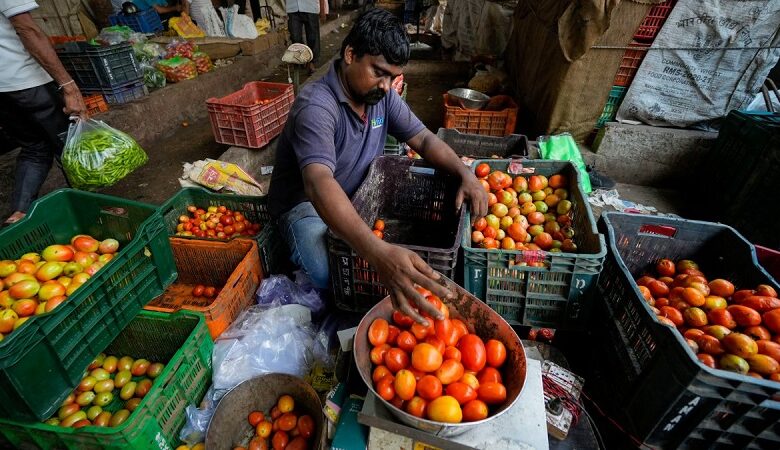Tomato Exports from Nepal to India Surge: An Analysis

In a peculiar turn of events, Nepal witnessed a surge in tomato exports to its neighboring country, India, within a span of just two weeks. This unexpected uptick in tomato trade took place against the backdrop of a rather unconventional incident in June when a group of farmers unloaded truckloads of tomatoes on a major road in front of the Kalimati fruit and vegetable market, Kathmandu’s largest wholesale vegetable market. The underlying reasons for this export spree, the economic implications, and the broader context of Nepal-India trade relations warrant exploration.
According to official records from customs offices at Birgunj, Mechi Customs in Kakarbhitta, and Bhairahawa, Nepal exported a whopping 669,680 kilograms of tomatoes to India by August 18th. This figure, however, only encapsulates the tomatoes exported in substantial quantities and subjected to official taxation processes after India’s decision to resume tomato imports from Nepal on August 4th. The possibility of smaller businesses and individual farmers conducting independent tomato exports, which may not be documented by customs offices, adds a layer of complexity to the situation.
The price point at which these exports occurred provides further insight into the economic dynamics. Each kilogram of exported tomatoes was priced at NPR 12, amounting to approximately NPR 8.036 million (USD 60,486.42). This highlights the substantial economic activity generated by this surge in exports, with noteworthy implications for both the Nepali and Indian economies.
Analyzing the exports at different customs points along the India-Nepal border, the Birgunj customs office recorded the highest volume, accounting for a staggering 637,680 kilograms of tomatoes. Mechi Customs in Kakarbhitta contributed 25,000 kilograms to the export, while Bhairahawa Customs exported 7,000 kilograms to India.
The roots of this trade phenomenon can be traced back to India’s decision to import tomatoes from Nepal in the wake of skyrocketing tomato prices in the Indian market, which reached a staggering 200 INR per kilogram. The resumption of imports from Nepal provided a more economical alternative, with the price per kilogram set at NPR 10 initially. However, this economic equilibrium was short-lived as the price trajectory witnessed a dramatic change.
By the third week of August, the price of exported tomatoes had surged twelve-fold, reaching NPR 120 per kilogram. This stark escalation emphasizes the intricate relationship between supply, demand, and cross-border trade dynamics. The market forces at play have created an unforeseen windfall for Nepali tomato growers while potentially presenting challenges for Indian consumers, who are now faced with inflated tomato prices.
The tomato export surge from Nepal to India highlights the intricacies of trade relations between these two countries. Nepal’s strategic geographical location, along with its agricultural resources, positions it as a significant contributor to India’s food supply chain. However, the swift price escalation also underscores the need for a sustainable approach to cross-border trade that benefits all stakeholders involved.
As both nations navigate these economic shifts, the tomato export phenomenon serves as a timely reminder of the complex interplay between trade policies, market dynamics, and the welfare of farmers and consumers alike. It sheds light on the delicate balance required to ensure fair trade practices, economic stability, and food security in an increasingly interconnected global landscape.
News Mania Desk / Agnibeena Ghosh 26th August 2023






